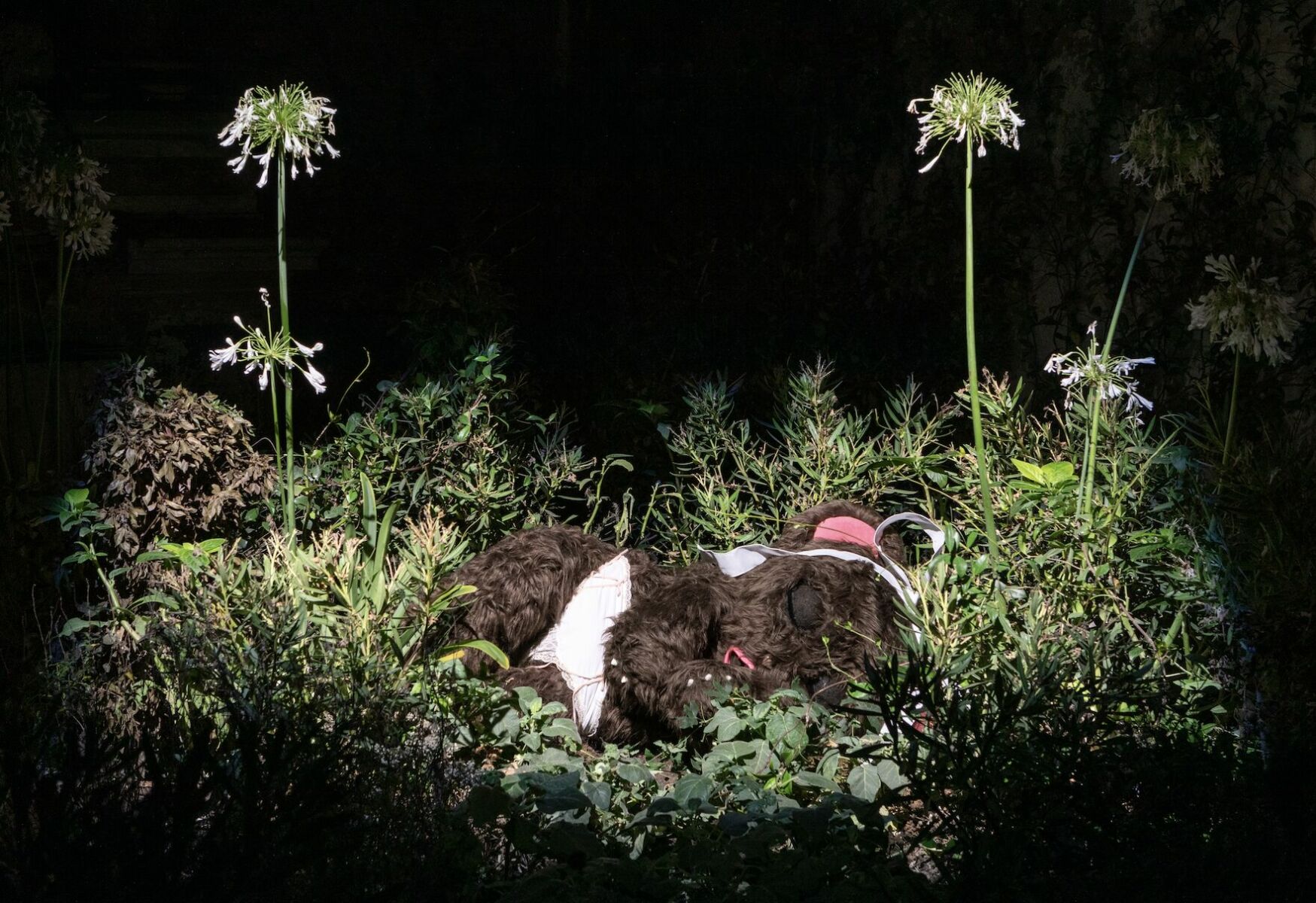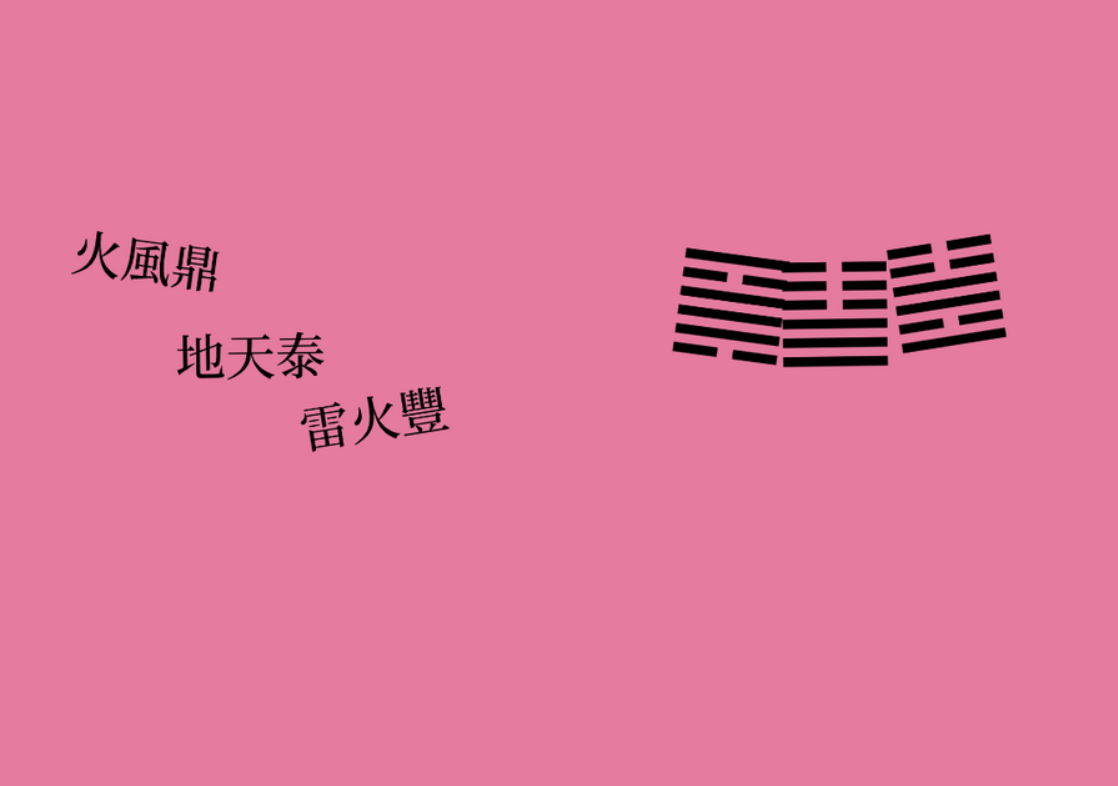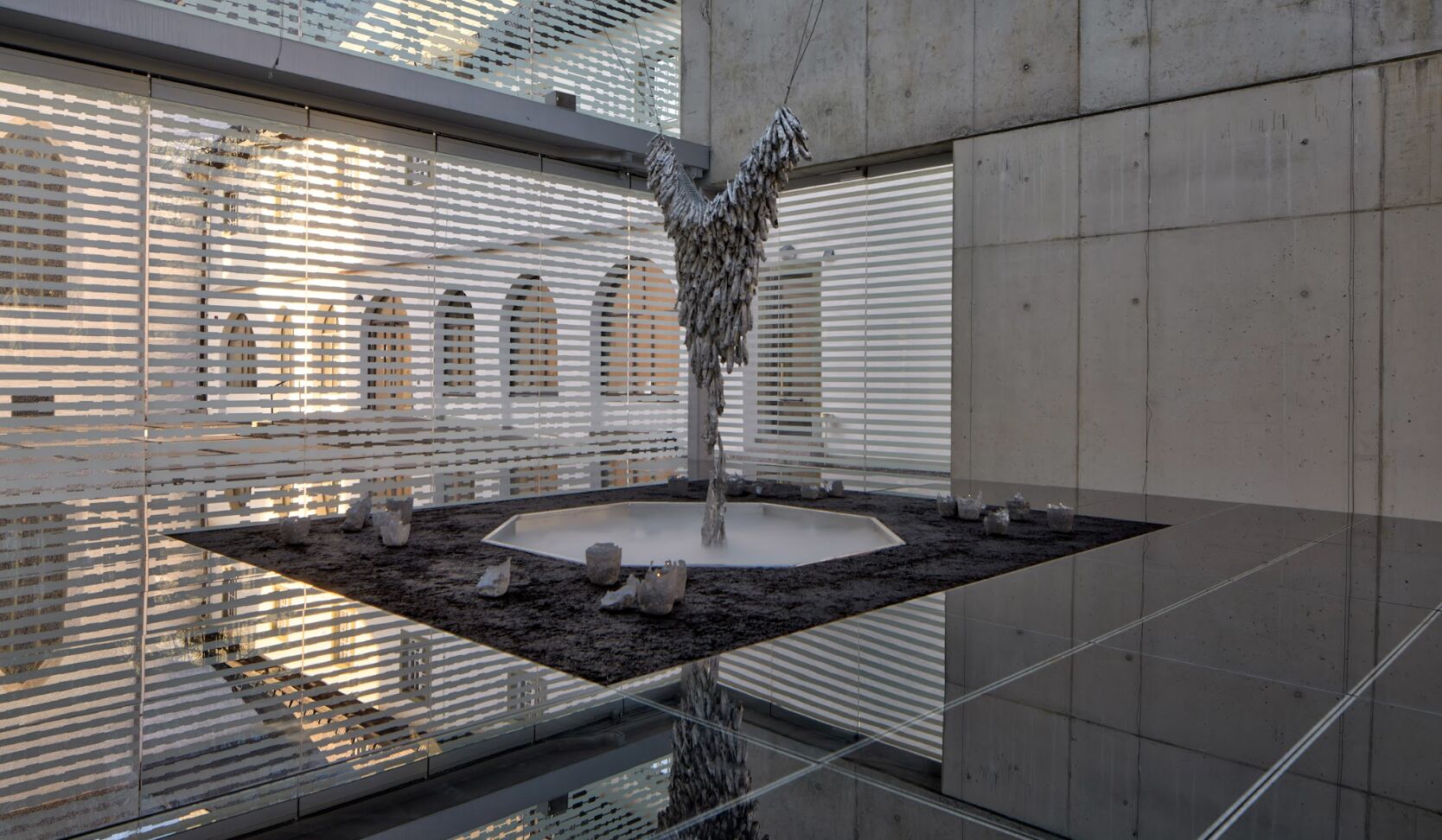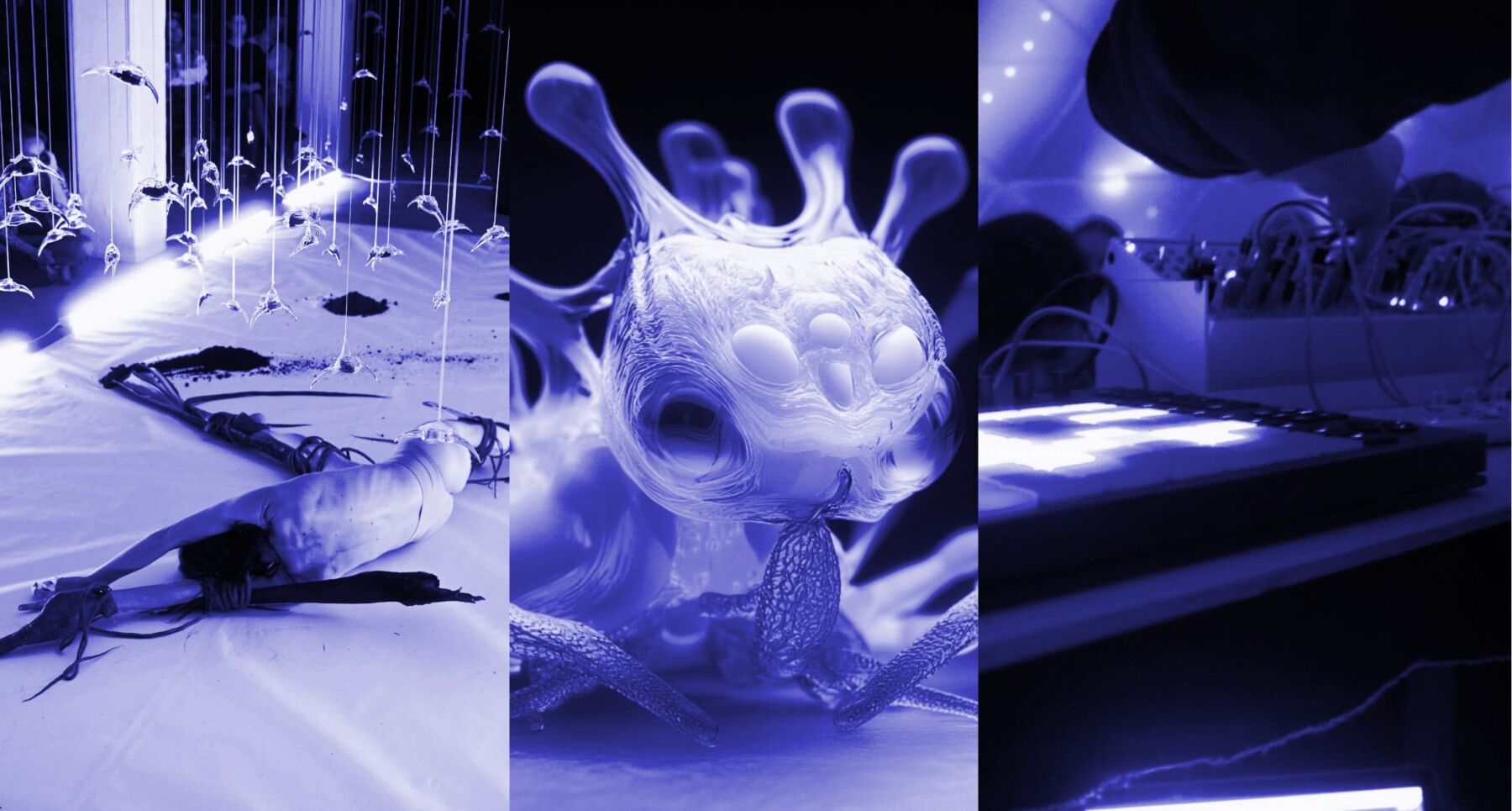Text by Martyn Riley
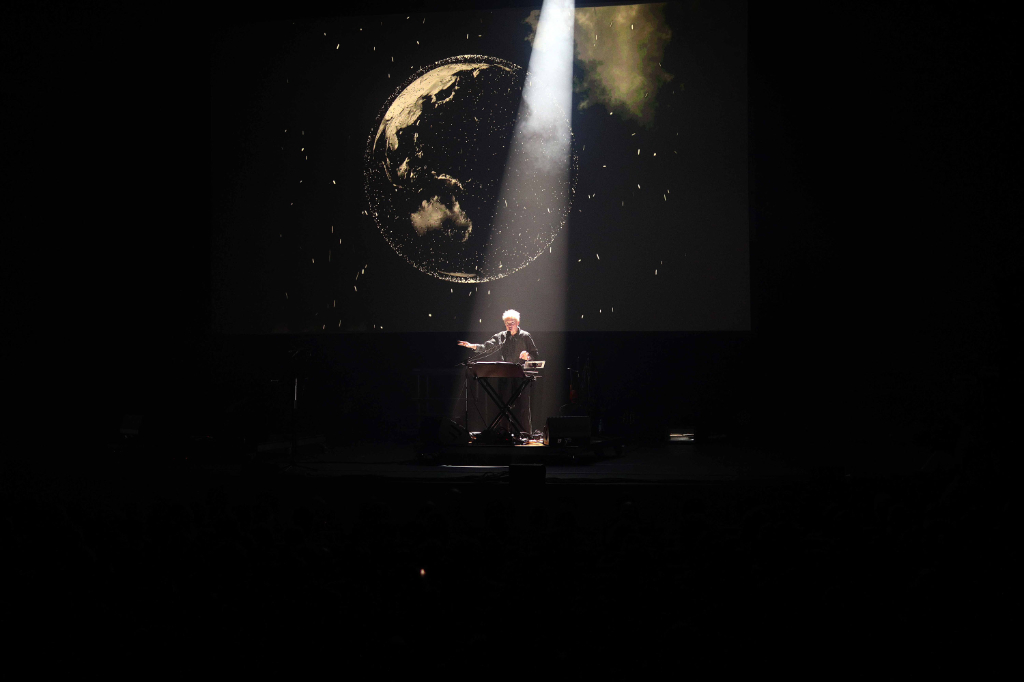
Rewire has a dynamic all its own, enticing and confusing the individual into what they want from their time in The Hague. With its looming, enormous churches, bustling post-modern dystopian liminal spaces, youthful Uni-city appeal, unforgiving bike lanes, and an enviable public transport system. Rewire 2025 overwhelmed me to say the least, and the 14th edition could have replicated this, however, by selecting less, avoiding the queues (excluding Kali Malone for a stunning rendition of All Life Long at the sizeable Grote Kerk, due to an ill-advised kebab pitstop) and letting the geographies between venues create some happy artistic accidents and experiences, it had a positive flow.
Although Rewire 25 had a more ‘centralised’ feel by utilising the huge Amare Convention Centre, all scalloped alien-looking exterior and escalators, as the festivals main hub, once again The Grey Space retained its pumping heart, with its radio, enticing books and vinyl and of course its many talks and panels that they do so well. A partnership of over five years, which has worked particularly well, is Rewire’s ongoing relationship with iii (Instrument Inventors Initiative), an artist-run community platform that supports research and creation internationally, with a presence in this city. Their annual Proximity Series this year was subtitled Echoes of Entropy.
Firstly, Zimoun’s Motors, Strings, Resonance Bodies immersed viewers in a symphony of tactile and auditory experiences. The deep, resonant tones of oil drums filled the room, while in an adjacent space, a captivating display of hung plastic jerry cans swayed gently, gently stirred by dozens of small motors and intricate wires. Although the environment buzzed with activity, I found it hard to see the chaos; instead, I was struck by a surprising sense of order and rhythm that underpinned it all.
In stark contrast, Navid Navab’s installation Organism + Excitable Chaos, created in collaboration with Garnet Willis, explored a mesmerising generative chaos that instantly drew me in. The piece featured gigantic, hypnotic cogs that turned and interacted with extendable arms, each movement evoking a sense of anticipation. Viewers were left in suspense, willing each swing and path to unfold in unpredictable ways. As if in response, these mechanisms activated an array of organ pipes, which produced dissonant and haunting sounds that echoed throughout the space, creating an otherworldly atmosphere that lingered long after the experience had ended.
Ioana Vreme Moser’s Coquetta took up most of my time, along with a revisit. While it relates specifically to the lost technology of fluid electronics and computing, the strange and wondrous connections between each hanging transparent ‘sub-unit’ and pumping junction created a captivating experience. Entering through a heavy curtain via a back door, I was confronted with the liquid pumping and the throbbing hums emitted by impressively suspended plates. Their interplay with each pipe and junction point and their mysteriously curated journeys added to the intrigue. A more traditional display case adjacent to the artwork provided archival information about this unfamiliar process, which almost seemed like a folly that never truly existed.
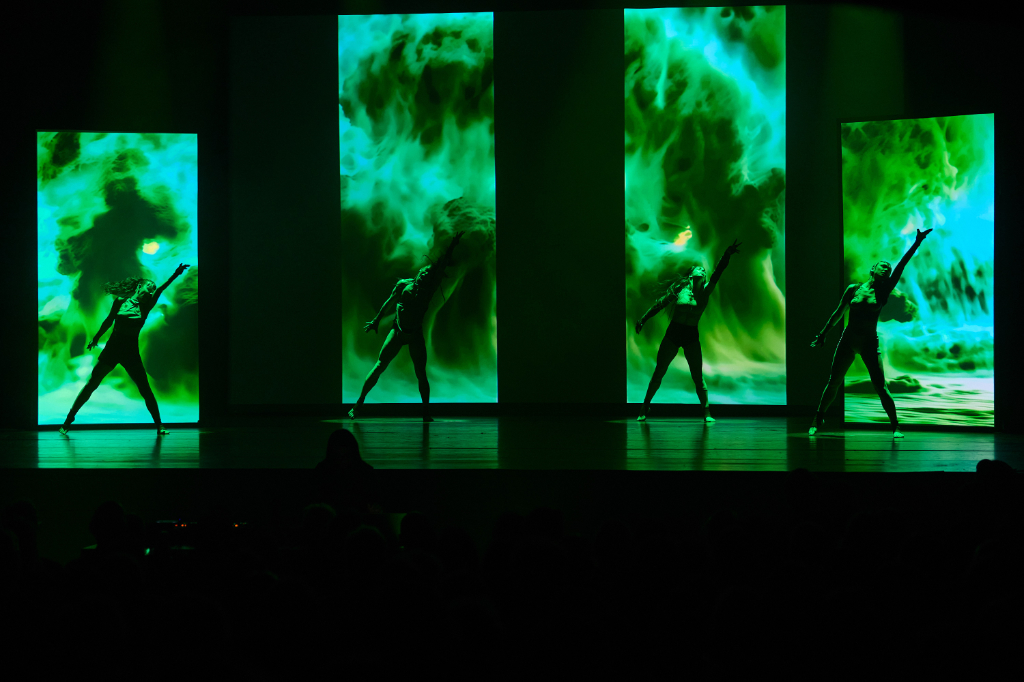
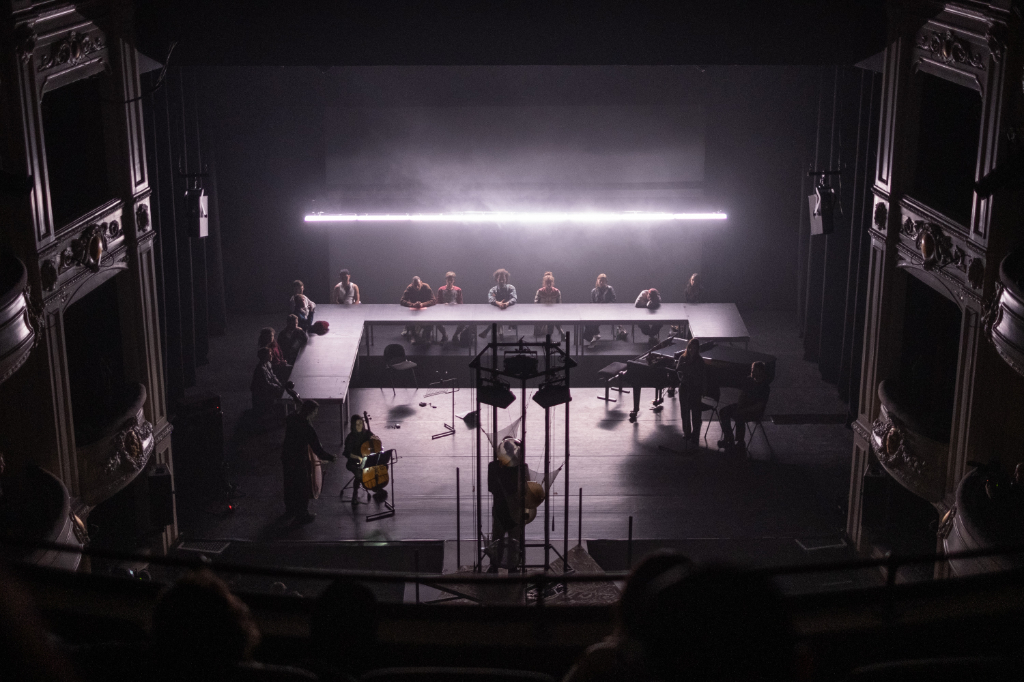
The largest structure in the Amare was N-Poltope: Behaviours in Light and Sound After Iannis Xenakis, which dominated the foyer with its imposing frame. Its location, in a main tiered seating that rose high above, by default, made it a communal meeting point. An impressive piece, particularly because of its ability to produce spatialised sound across a large area, which contributed to its overall imposing brilliance. Along with the familiar work of Aura Satz’s brilliant documentary Warnings in Waiting and its reduction and edit down to a 3-screen edited basement installation, which worked well, once again, a strong mix of pieces curated by iii.
As in previous years, the opening main show on Thursday took place at Koninklijke Schouwburg. Alessandro Cortini brought his intense electronic saturations of the Nati Infiniti composition, accompanied by visuals of macro-geological close-up sweeps. The sound was on point, as it needed to be, and this was something to behold. This was end-of-the-world music for the current times, which required some post-show decompression.
Earlier, Alvin Curran brought his icon Marmite Rites, the continually evolving signature piece, to the centrally located Hofvijer Lake directly opposite the Parliament buildings. A dozen-plus row boats containing a mix of brass ensembles, amps playing drones and samples with Alvin Curran himself standing and balancing astride a large Tom, snare and conch, launching cues to the boating chaos; an apt link to Echoes of Entropy. I was lucky enough to experience, along with the bemused and confused locals, their ‘soundcheck,’ which involved much chaotic rowing and near misses, along with the sounds of brass drones, conch wails, and sporadic drumming from Curran, in the bright afternoon sun. Maybe this was even more entertaining than the later dusk performance time with its packed banks and overt chatter from the attendees.
Artist borders are bridged and ignored by the intricate, sensuous work of Verdenstreatnet, an Oslo-based art collective. Their performance of Flat Sun, a multiplicity of fourth-wall-breaking video, flickering projections interacting with structures, all stoically (re)arranged by the artists and performers, challenges the fragile boundaries of sonics, objects, and noise. This was undoubtedly a highlight, which I continue to unpack. Billy Bultheel is an artist who creates transgressive experiences that challenge artistic norms. A Short History of Decayfocal point of the performance was the use of archioacoustic vases, explicitly designed; the vessels were housed in a towering structure that towered over the performers.
This premier performance contained droning feedback loops generated from live sound by a small ensemble consisting of piano, flute, and voice. At the rear of the starkly lit stage, some fortunate attendees were seated at a long L-shaped table facing the audience, creating an atmosphere reminiscent of a scene from Dr. Strangelove. Billy Bultheel often revisits medieval and historical themes in many of his design and composition processes, and acts as “maps and performances create parallel universes.”
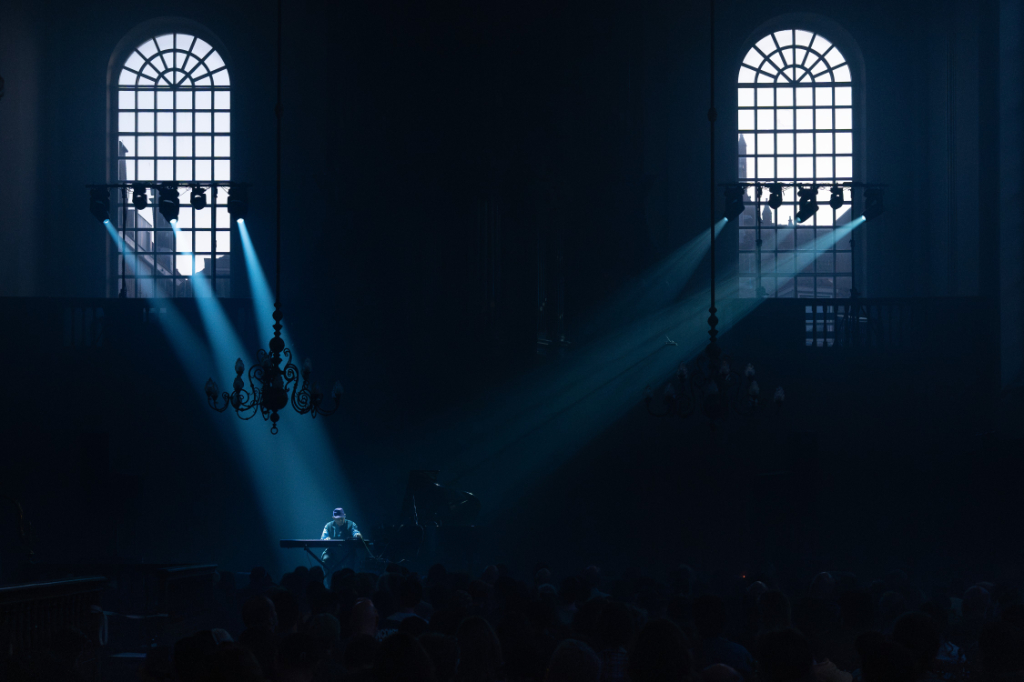

It wasn’t all; it wasn’t just about ensembles and theatrics. Brandon Labelle’s poetic talk at Page One, where he shared a personal journey through his youthful experiences on the West Coast, evoked images of blissful surf films while emphasising the connections between the ocean, surfing, and his concept of wet sound. Then Joan La Barbara captivated the audience with her fascinating and sometimes otherworldly extended vocalisations, interspersed with detailed stories about how these vocal techniques developed. Also, the original artistry of Fuji||||||||||||ta was showcased, demonstrating his relentless pursuit of innovation. He continually discovers and develops new approaches using minimal sound tools; in this performance, he utilised a large organ pipe, a looper, an air compressor, and his manipulated and looped voice.
Seeing so many live artistic explorations often make the viewer question their role, and this can be seen in many ways; often, one of connection. Seeing the Able Noise duo of Alex Andropoulus and George Knegtel is such a connection. The glances, the entranced mutual facial expressions, and the noting of previous workings that were about to unfold in real-time. Well, these are shared expressions that mean everything to audiences. Likewise, with the pure energy between Holy Tongue and Shackleton, the calm intensities with Jabu and Birthmark and the Reich-like-on-speed of Tristian Perich & ensemble 0 with their trio of vibraphones. The sublime and perfect duo of Ana Roxanne and DJ Pythion, also known as Natural Wonder Beauty Concept, was no different; there is something wonderful in these performative connections.
Laurie Anderson will always be a treasure to this world. Taking the stage after Lyra Pramuk’s storming future-folk performance, which mainly featured new material and earthly, human visuals, she opened her set with a beautifully played violin piece that showcased her pure talent, transitioning flawlessly into political and topical themes. Then later, donning a jacket equipped with drum pads, she wore a smile that reflected her joy in sharing her art. It reminded me of Annea Lockwood, who similarly shared her thoughts and experiences with an enthusiastically joyous audience at Rewire 24 last year.
As a recently departed iconic figure once stated, being any type of artist is often viewed as a social dysfunction, a loony thing to do, and that all culture is extra. Well, The Hague seemed to be the most dysfunctional place I’ve visited in quite some time. Witnessing the joy on Laurie Anderson’s face as she ran off the stage after a huge post-Tai Chi lesson—incorporating 20 of Lou Reed’s favourite moves—was truly uplifting. This was delivered to an audience of over 1,500 people, all of whom actively participated. It reminds us that we should celebrate every one of these ‘cultural extras.’

